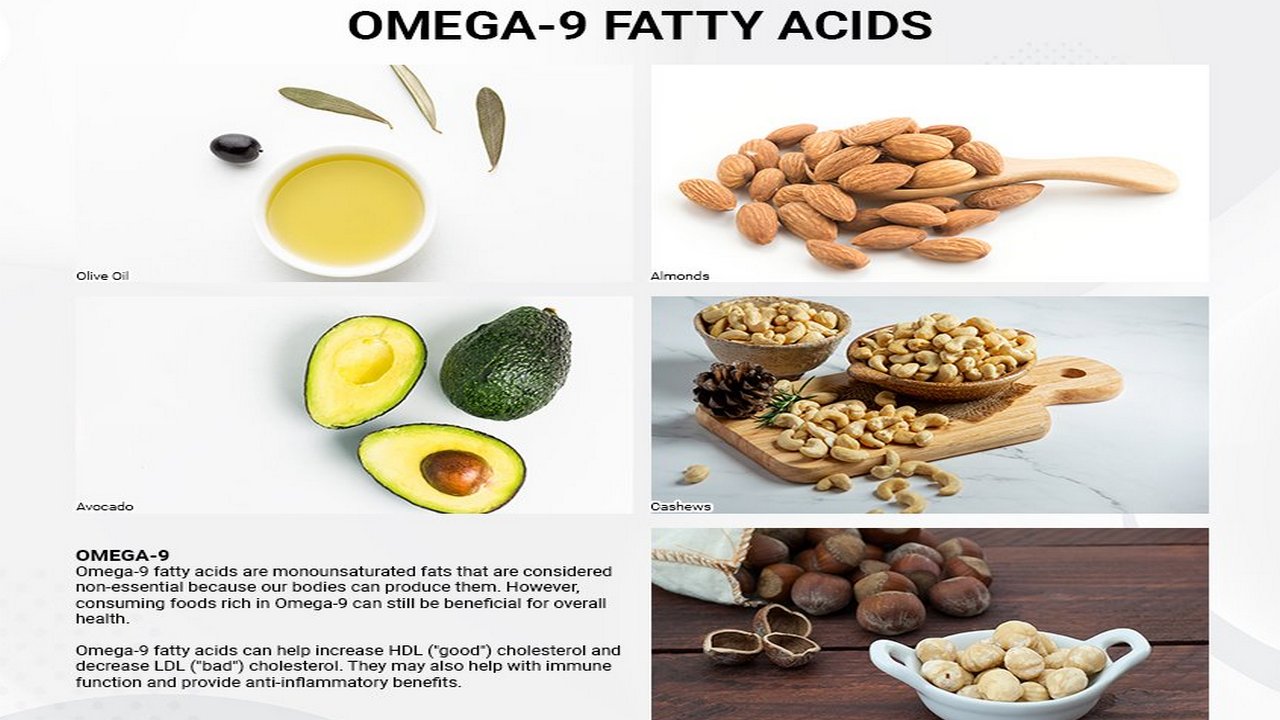Posted on May 18, 2023

Omega-3, 6, and 9 are fatty acids that are essential for human health. These fatty acids are found in a variety of foods, including fish, nuts, seeds, and vegetable oils. While all three of these fatty acids are important for maintaining good health, they each have unique properties and functions in the body.
Omega-9 Fatty Acids

Omega-9 fatty acids are a type of monounsaturated fatty acid that is not technically “essential” because the body can produce them on its own. However, consuming foods that are rich in omega-9 fatty acids, such as olive oil and avocado, can still have health benefits. Omega-9 fatty acids are thought to help lower cholesterol levels and reduce the risk of heart disease.
Oleic acid is the primary omega-9 fatty acid found in food sources. It is found in high concentrations in olive oil, as well as in avocados, nuts, and seeds.
Omega-3 Fatty Acids

Omega-3 fatty acids are a type of polyunsaturated fatty acid that is essential for human health. They are primarily found in fish, such as salmon, tuna, and sardines, as well as in walnuts, flaxseeds, and chia seeds. Omega-3 fatty acids are important for maintaining healthy brain function, reducing inflammation, and preventing heart disease. They are also crucial for fetal development during pregnancy and early childhood.
The three primary types of omega-3 fatty acids are eicosapentaenoic acid (EPA), docosahexaenoic acid (DHA), and alpha-linolenic acid (ALA). Fatty fish are the main sources of EPA and DHA. ALA is found in plant-based sources such as flaxseeds and chia seeds. EPA and DHA are more bioavailable than ALA, indicating that they are more readily absorbed and utilized by the body.
Omega-6 Fatty Acids

Omega-6 fatty acids are another type of polyunsaturated fatty acid that is essential for human health. They are found in a variety of foods, including nuts, seeds, and vegetable oils. Omega-6 fatty acids play an important role in the body’s inflammatory response, but too much consumption of omega-6 fatty acids can lead to chronic inflammation, which can contribute to a variety of health problems, such as heart disease and arthritis.
Linoleic acid (LA) is the primary omega-6 fatty acid found in food sources. LA is converted into gamma-linolenic acid (GLA) and arachidonic acid (AA) in the body. GLA is thought to have anti-inflammatory properties, while AA is involved in the production of prostaglandins, which are involved in the body’s inflammatory response.
The Importance of Balance
While all three types of fatty acids are important for good health, it is important to maintain a balance between them. The typical Western diet tends to be high in omega-6 fatty acids and low in omega-3 fatty acids, which can lead to chronic inflammation and a variety of health problems. To maintain a healthy balance of omega-3 and omega-6 fatty acids, it is recommended to consume more fatty fish, nuts, and seeds and to reduce the consumption of processed and fried foods that are high in omega-6 fatty acids.
In addition to balancing omega-3 and omega-6 fatty acids, it is also important to consume foods that are rich in omega-9 fatty acids, such as olive oil and avocados. However, it is essential to keep in mind that consuming too much of any type of fat can lead to weight gain and other health problems, so it is important to consume fats in moderation and as part of a balanced diet.
